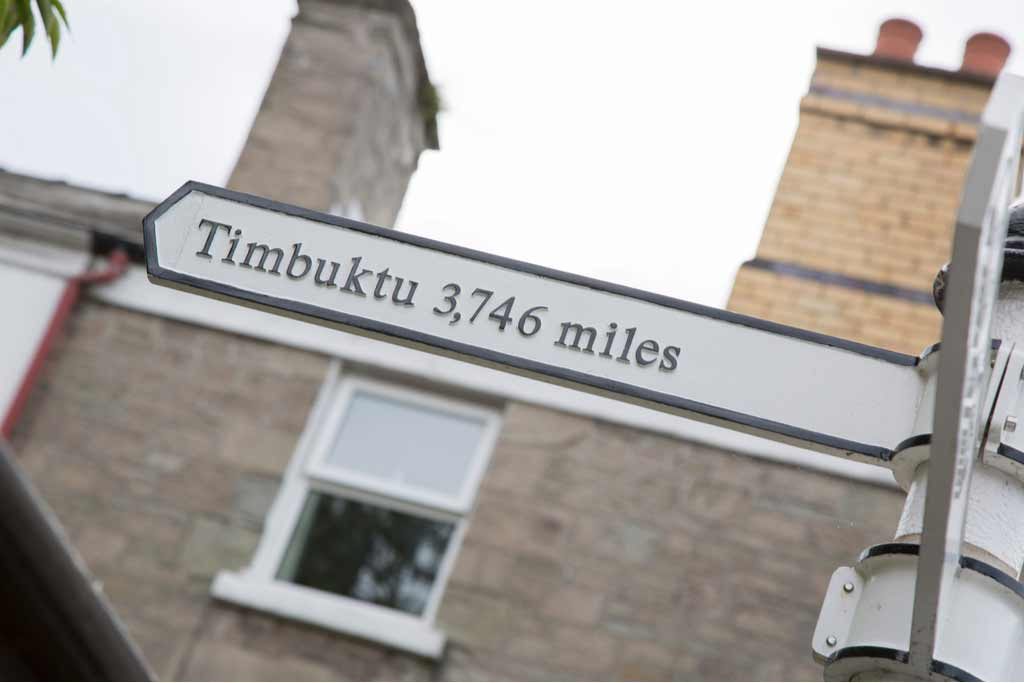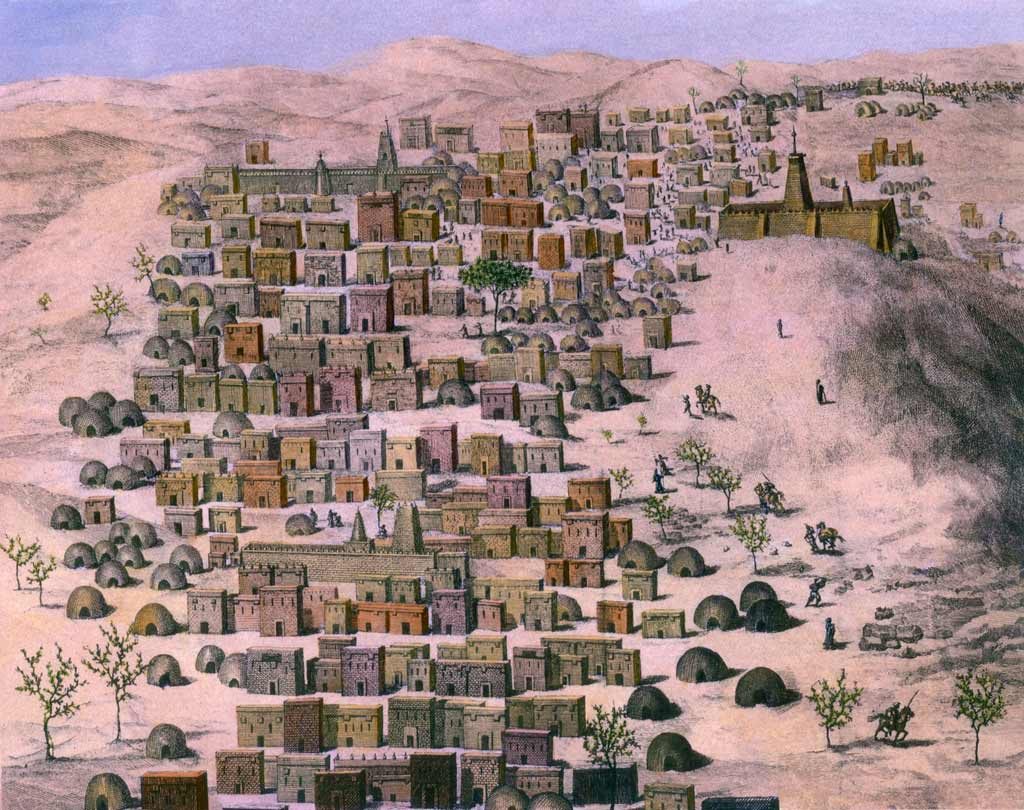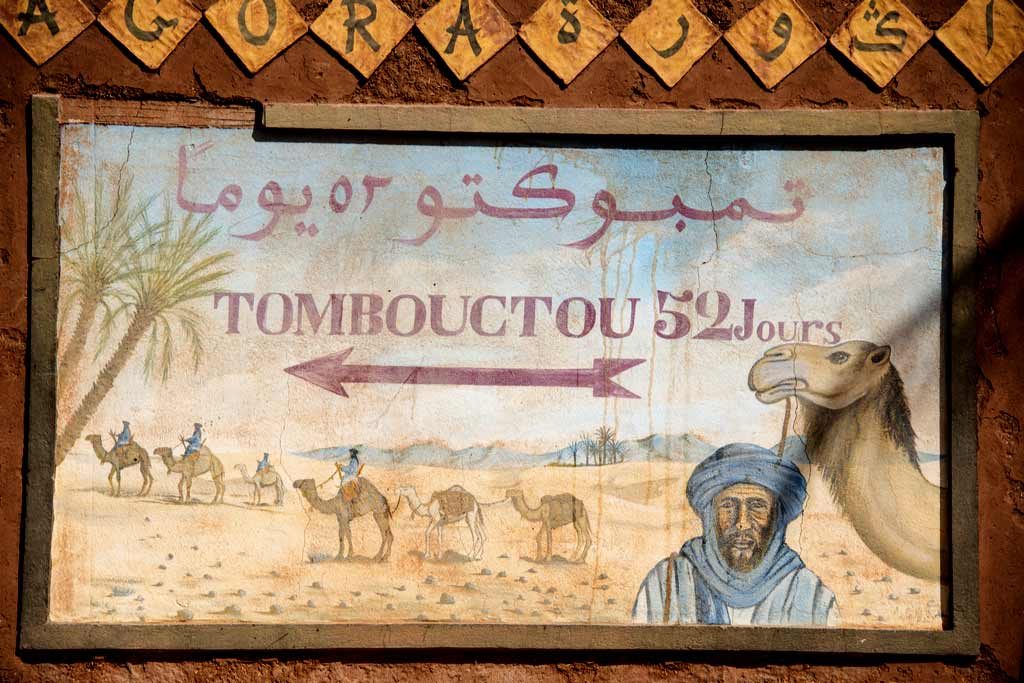Some people think “From here to Timbuktu” is a silly saying about a made-up place. Nope! Timbuktu is very real, and a very important aspect of our Islamic legacy. Here’s a refresher on what we should all know about Timbuktu.
As if “Timbuktu” isn’t an enticing enough name, often used in sayings and songs, the city in the Mali Republic in West Africa has a slew of cool nicknames. The city of Timbuktu is also known as:
- The Pearl of the Desert
- The Land of a Million Manuscripts
- The Old Woman’s City
- The City of 333 Saints
So what’s the big deal about the ancient city of Timbuktu?
Timbuktu’s first occupation dates back to the 5th century BC. Originally it was a temporary seasonal settlement for traders in salt, gold, and camels. By the end of the 6th century Timbuktu prospered. It became a permanent commercial site early in the 8th century.
Apart from being a simple Trans-Saharan trade spot, the city quickly became a meeting-place of intellectualism and culture during the 13th century. Timbuktu was a magnet, attracting both businessmen as well scholars. The city gracefully wove both activities together.

Islam came to Timbuktu How and When?
As early as the 11th century CE, Islam reached Timbuktu by the Berber and Tuareg merchants via the Trans-Saharan Trade. Some resources argue Islam was brought to the city by the same Muslim traders during the 9th century.
So let’s summarize both views, saying Islam was introduced to Timbuktu between the 9th and the 11th centuries.
Timbuktu’s Educational Achievement and Economic Development
From the 13th to 14th centuries Islamic teaching and learning had well-developed, spreading in the city. At the time, under the reign of the very eminent ruler of the Mali Empire, Mansa Musa (the tenth emperor, and the richest man ever), the legendary city of Timbuktu became a celebrated center of Islamic learning.
During Mansa Musa’s era, Islam became the dominant religion in the city and Arabic became the language of scholarship.

Where is Timbuktu?
What made people start asking ‘’Where is Timbuktu?!’’ The name became famous due to the Hajj of Mansa Musa to Mecca, passing by through Cairo in 1324.
It was this Hajj that awakened the world to the scholarship and wealth of Timbuktu. The city became known and attracted scholars from throughout the Muslim world and western countries. Famous scholars visited Timbuktu, such as Ibn Battuta (the 14th-century Muslim traveller).
“The quality of teaching at the time (14th century) in Timbuktu, was very high and standard’’ Ibn al-Mukhtar recorded in his 17th century book ‘’Tarikh al-fattash.”
He further explains, ‘’Abd Arahman Atimmi, an Arabic professor from Hedjaz (Arabic Peninsula) is reported to have arrived in Timbuktu with the intention of teaching, but after talking to some of the students and seeing their level of learning, he realized that he had such an inferior academic knowledge compared to Timbuktu’s scholars, he was humbled and decided to become a student himself.’’
At its prime, from the 13th to 14th centuries, the city had become one of the most prestigious Islamic scholarship learning center, and became a home to remarkable scholars from around the world. That historic pilgrimage of Mansa Musa also put the name of Timbuktu on the 14th century World Map!
By the 14th century, under the Askia Dynasty, the city continued to grow, spiritually, intellectually and economically.
For hundreds of hundreds years, the city of Timbuktu had played very important role in the wide spread of Islam and Islamic teachings in Africa, precisely, in West Africa through its eminent scholars and prestigious educational centers.

Who has been to Timbuktu?
Throughout its history, Timbuktu has been blessed for having some great rulers like, the emperor Mansa Abu Bakar II (he traveled to America around 100 years before Columbus), Mansa Musa I (the BBC described him as “the richest man of all time”), and Askia Mohammad I.
The city was very lucky to have a countless number of the most distinguished scholars, such as, Mohammed Bagayogo al-Timbukti al-Jinnawi (the Sheik and professor of Ahmed Baba) and Ahmad Baba al-Massufi al-Timbukti al-Sudani (1556 –1627 CE). Baba was the final Chancellor of Timbuktu’s Sankore University and wrote more than 40 books on different subjects.
Another important point to highlight is that the city was home to one of the earliest universities in the world!
Timbuktu University was composed of three main academic learning centers (Mosques):
- Sankore Mosque/ Learning Center (founded in 989 CE, by the al-Qadi Ibn Mahmoud Ibn Umar)
- The Department of Jingarey Ber Mosque (built in in 1327, by Mansa Musa I)
- Sidi Yahya Madrasah and Masjid (built in 1440 by Mohamed Naddah)
Sidi Yahya along with Djinguereber and Sankore compose the “University of Timbuktu.” The university offered various academic subjects, such as language and literature, medicine, mathematics, physics, astronomy, history, and law, but the priority was given to Islamic subjects.
The University of Timbuktu was renowned for its excellence and without equal in all of sub-Saharan Africa.
To date, all these 14th century buildings are still standing in the city of Timbuktu. As well, about 80 private libraries and Ahmad Baba public library still exist in the city, storing over 700,000 invaluable manuscripts.

Intellectual decline of Timbuktu
By early 16th century, the city of Timbuktu reached the peak of its intellectual and commercial development during the reign of Askia Dynasty, before its golden age came to an end with the collapse of the Songhai Empire following the Moroccan forces invasion in 1591.
That invasion destroyed several learning centers and manuscripts of the city, Many scholars were killed, and some deported to Morocco, including the last Chancellor of Sankore University, Ahmed Baba. As a consequence, the legendary city of Timbuktu went to a deep intellectual sleep.
For centuries, a number of notable scholars and historic writers have described Timbuktu in various literature. Most notable are: Ibn Battuta, Ibn Faḍl Allāh al-‘Umarī, Shabeni, Ibn Khaldun, Leo Africanus, and as well René Caillié,
In 1988, the city of Timbuktu has listed among the Top World Heritage sites by UNESCO. The mysterious city of Timbuktu is famous and memorable for many things, but its long-lasting contribution to Islamic and world civilization is its intellectual heritage.

The city of Timbuktu began as a simple crossroads of trade routes in the medieval times. By the end of the 13th century is was the world scholarship center and economic capital.
For hundreds of years, the city had immense contributions in the development of Islamic and global civilization. Today’s Muslims need to learn and understand our Islamic History, to know how far we have come. We’ve all come as far as Timbuktu and then some.